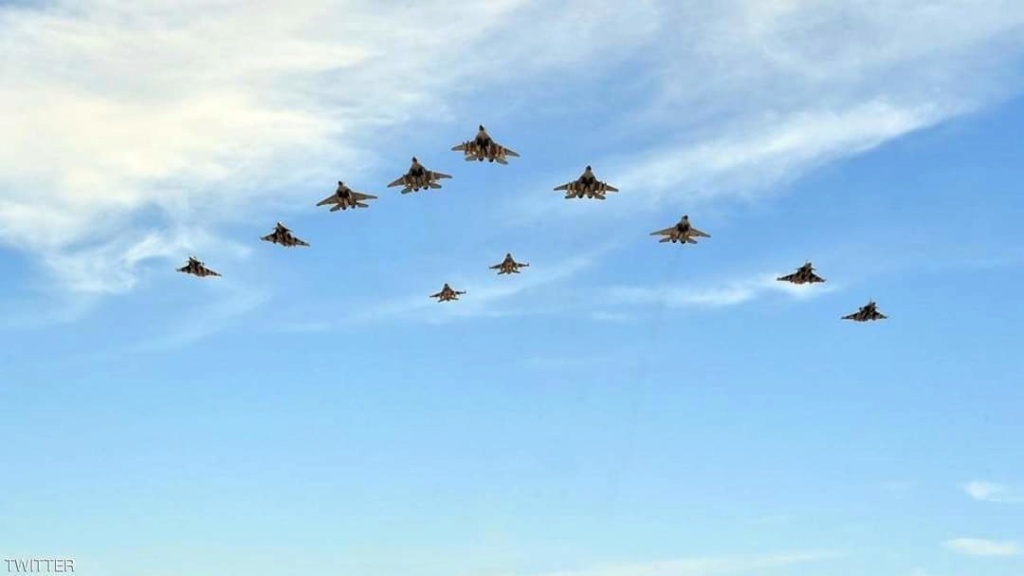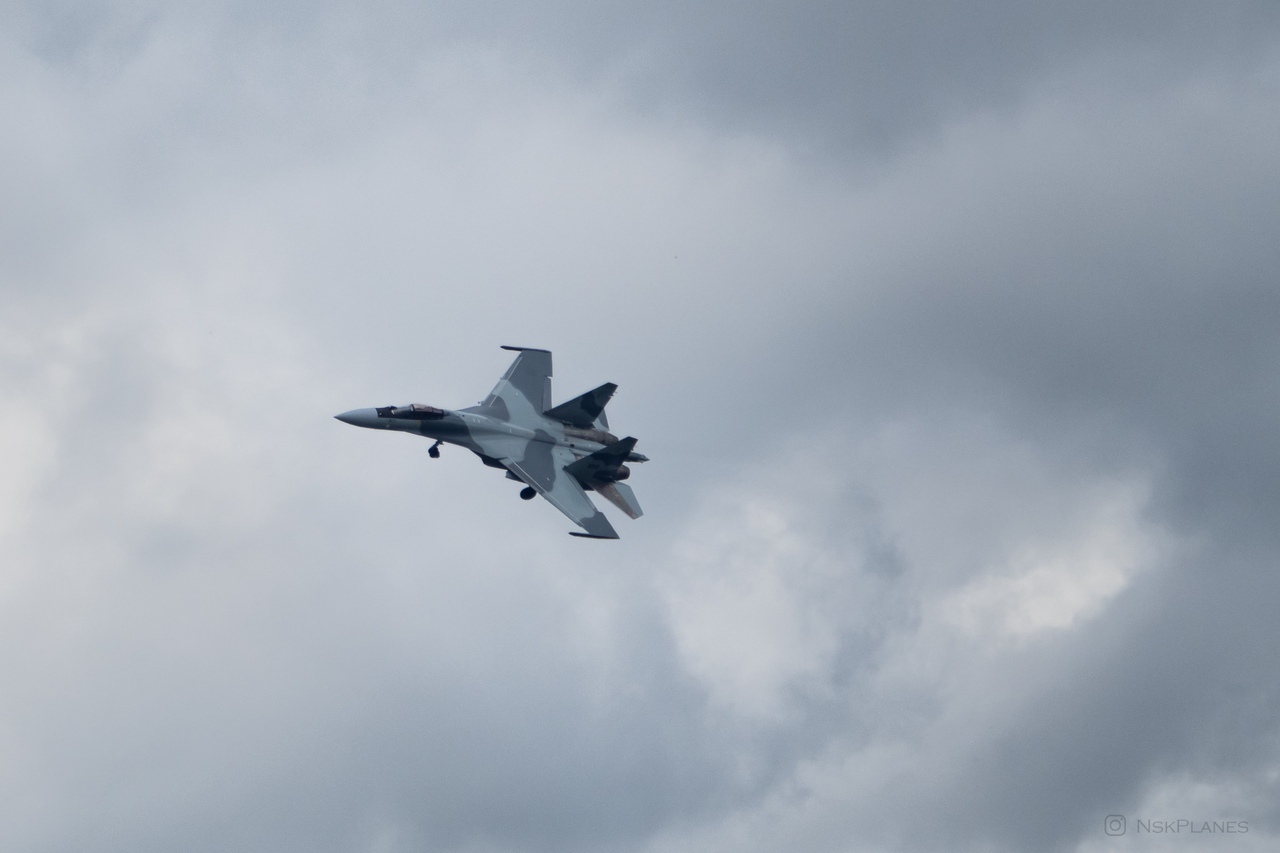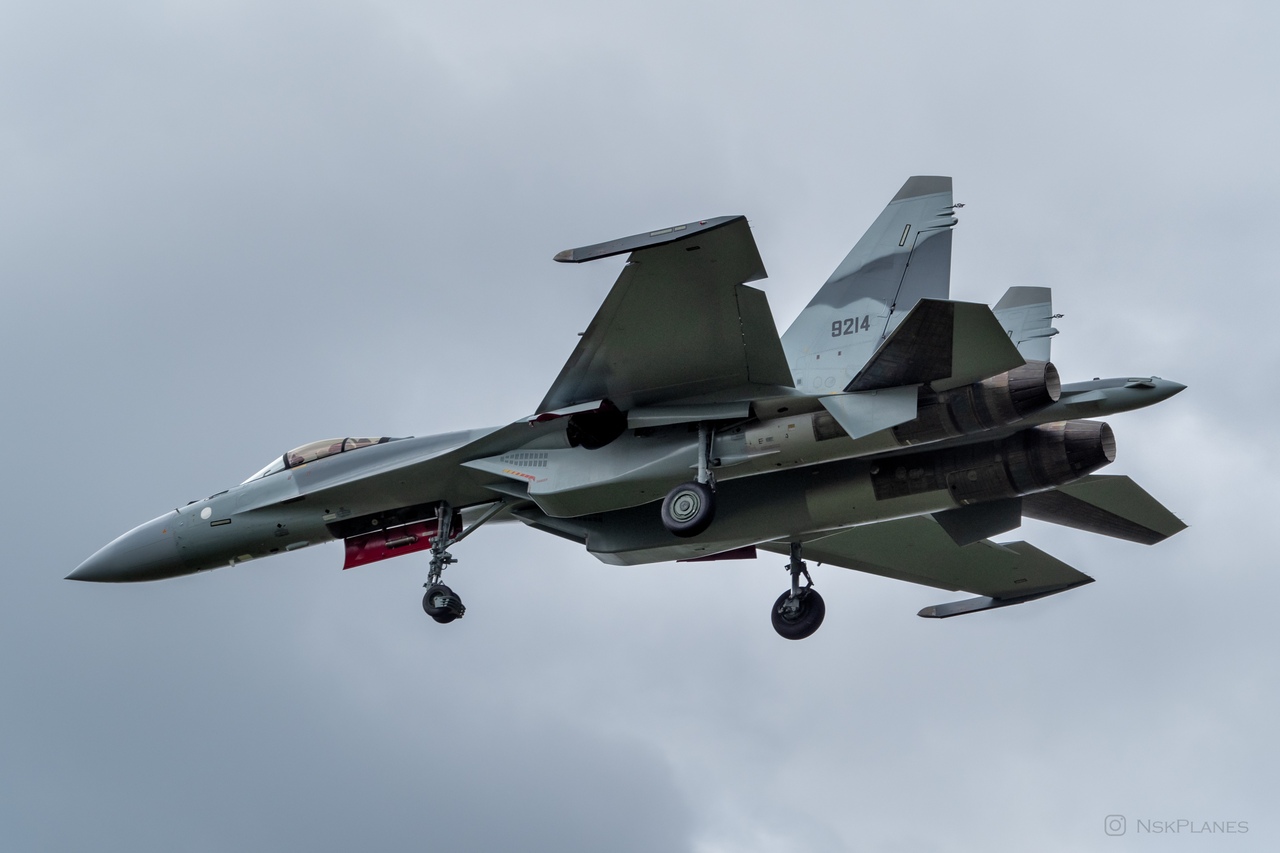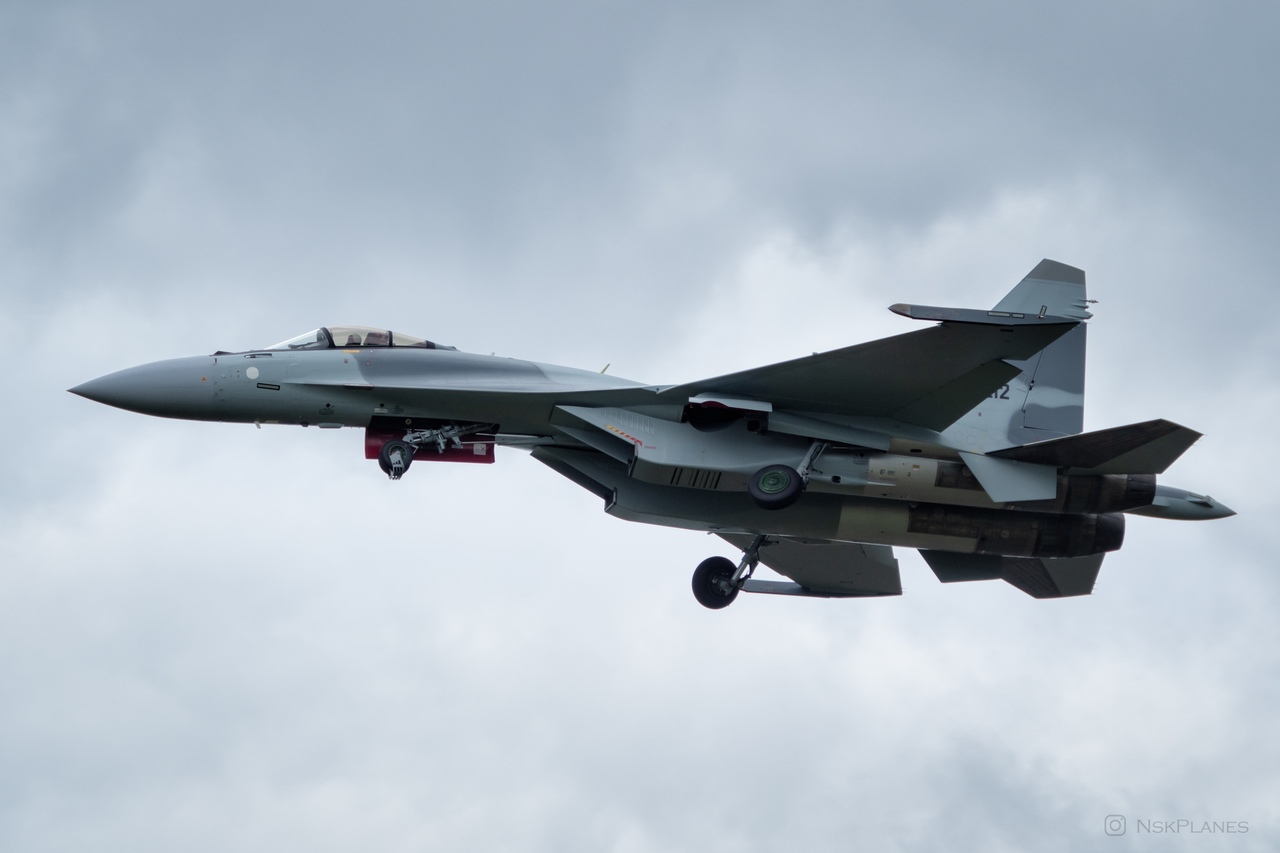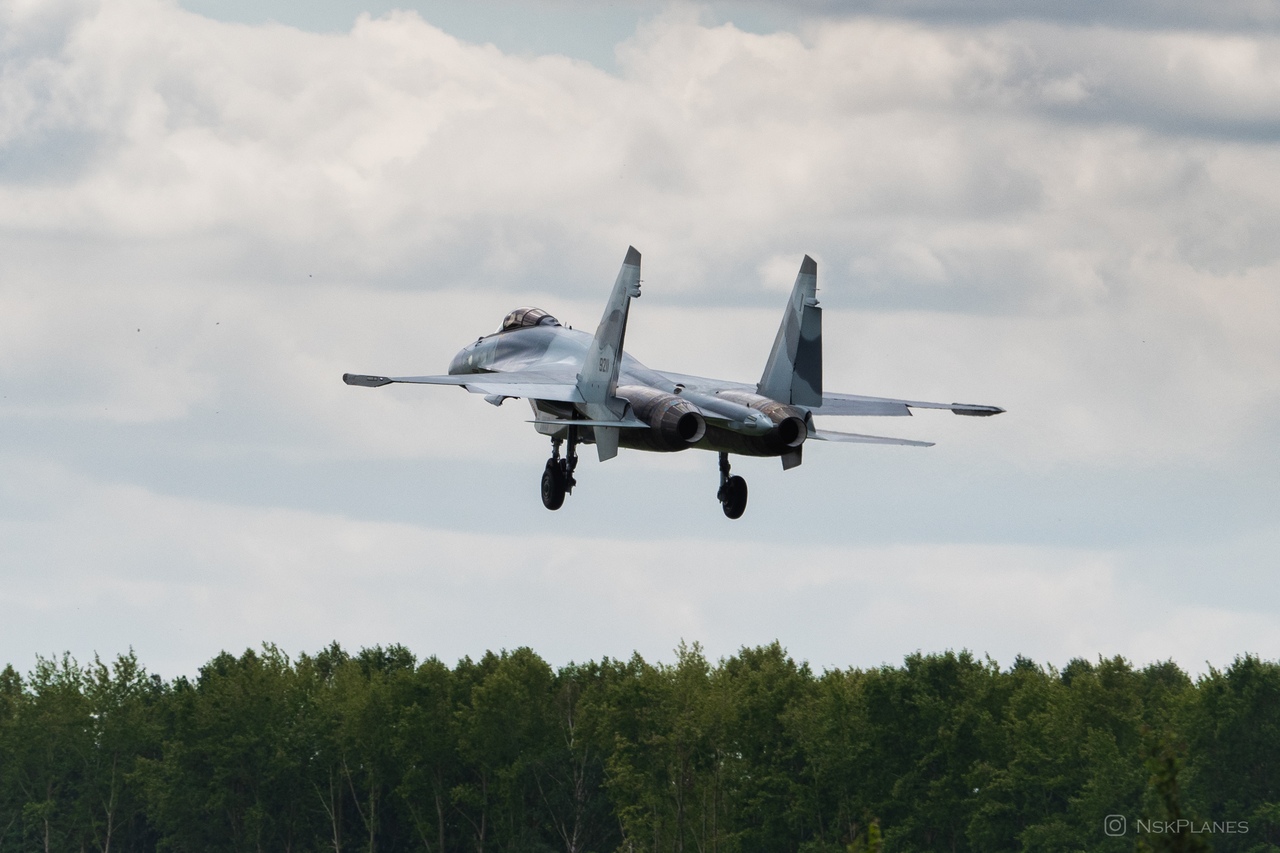I read that India has placed orders with Russia for 21 brand new Mig 29s( that means MiG-29M/M2, isn't it?) . Since India will fly the Mig 29s for the next 10 years at least Russia can sell the Mig 35 incrementally as technological enhancements instead of selling the entire package/aircraft
AFAIK the older MiG-29s had a metal structure/frame with skin attached, whereas the new models are made differently, not sure of the technical terminology... suffice to say the old model MiGs had bladders or fuel tank structures inside them to hold fuel whereas the new models each compartment is sealed off and can be used as a fuel tank if you wish meaning rather more fuel capacity with less weight.
So they can upgrade the engines of the Mig 29 with that of the Mig 35, then do the same for the sensors and weapons package. Eventually within 10 years the Indian Mig 29s will essentially be Mig 35s.
In a sense they could but the old MiG can never be the same as the newer models because of the different structure and way they are made... think of the older models including the Soviet S and SM and SMT models as being the SMT family, while the MiG-29M and the current M2 and -33 and -35 models are the new type.
You can put the bits you put in the new models into the old models but the old models will be heavier and with less capacity in terms of fuel and payload capacity.
Better buy mig-35 and phase out mig-29 when times come.
Their current MiG-29s should be good for a few years yet, it makes sense for them to keep them and retire their MiG-21s and MiG-27s and Jaguars first.
They could also save a lot of money by buying MiG-29M2s for now in large numbers... over time they can upgrade them to MiG-35 standard... I would probably order about 250 MiG-29M2s and perhaps 50 MiG-35s and with the experience of perhaps 5 years operating them all they can decide what features of the MiG-35 are worth the money and upgrade their 250 MiG-29M2s with those parts that are more expensive but worth while... remember the main complaint about the MiG-29SMT in Syria was that it wasn't incorporated in the IADS... which has also been a problem for India...
Indians already have engines for their migs. Mig35 uses a newer version. If india wants to upgrade them with mig35 engines and avionics they will need to buy those engines and radars which are expensive.
They could save money and improve commonality by upgrading radar and IRST and Engines across their Fulcrum fleet to maximise their spares pool... they could perhaps negotiate a deal for local production and joint development for an upgrade of both as well.
MiG tend to be the poor cousin in Russia... they could boost performance with a money injection from India to get a nice mediumweight fighter that could form the basis of a new stealth fighter for them...
Plane's engines need many spare parts to be changed often when used. Right now india has spare parts for its engines but if they go for mig-35's engines they will need new spare parts so it will increase cost.
Of course... they should fly MiG-21s only because they are cheap... you were talking about 2 billion dollars for spares support for 100 fighters how can you call that too expensive when they spent almost 8 billion on 36 French fighters?
Should they only spend lots of money on French aircraft?
Russian planes now need to be better than western aircraft and also remain cheap to buy and cheap to operate... a bit unfair and unrealistic.
Do you have any source for such claim. I don't remember reading about a program to upgrade mig-29 to mig-35.
Putting an AESA radar in a MiG-29SMT or UPG does not make it a MiG-35.
I said ground crew should be trained. Maintenance is not the same since mig35 uses a newer engine so the ground crew should be teached avout maintaining this new engine which makes the upgrade more costly.
Nothing compared with the cost of continuing to use MiG-21s and not training personnel to work with other engine types... BTW don't know about you but when I buy a new computer I don't have to go back to university to learn how to install the new version of Windows on it... the guys who work on these aircraft and these engines get manuals and when they give them new engines they get new manuals too...
Also mig-35 uses fly by wire contrary to mig 29.
Yeah, not that big a deal... the 29 already had a flight control system with a force feedback joystick... I believe the first ones were analog but later ones were digital... but it really doesn't make a huge difference except in weight and potential for battle damage etc etc... and of course improved performance.
Your source is from 2007. They never got aesa radar and the upgrade was made to UPG stabdard. They won't get AEA any time soon. Su-30MKI have the priority and not all of them will be upgraded.
And they don't need any upgrade as their mig-29 are used for air defence/interception.
As production of AESA modules ramps up they become smaller and cheaper and more powerful, while using less power and producing less heat... eventually they will likely fit them to all their aircraft.
How is Mig 29M/M2 radically different from Mig 29UPG ? Hardly any difference.
The structural design of the aircraft is different... You can't upgrade from the older to the newer.
The M2 shares its design structure with the KR (33) and the 35 and is like the original M model from the late 1980s in that it is a lighter stronger structure with more capacity to carry fuel in empty cells.
Egypt got KH-31 on her MIGs
Is this antiship or anti radiation variant ?
Hard to tell externally, but the Soviets actually intended to use both in naval attacks... the first wave of missiles would be the anti ship models followed by the anti radiation missiles... when the first wave turned on their radars to find their targets it was expected that the enemy ships would turn on their radars to detect the incoming threats and SAMs to defend themselves, which the next wave of ARMs would lock on to passively... AFAIK the anti ship models also have an anti radiation mode where they will listen for active radar sources and compare them with their radar return so if the radar target they locked on has an active radar signal coming from it then it will stop scanning with is own radar and attack below the active source... checking with active radar near the target to ensure it is not a decoy and active jammer decoying the missile away.






